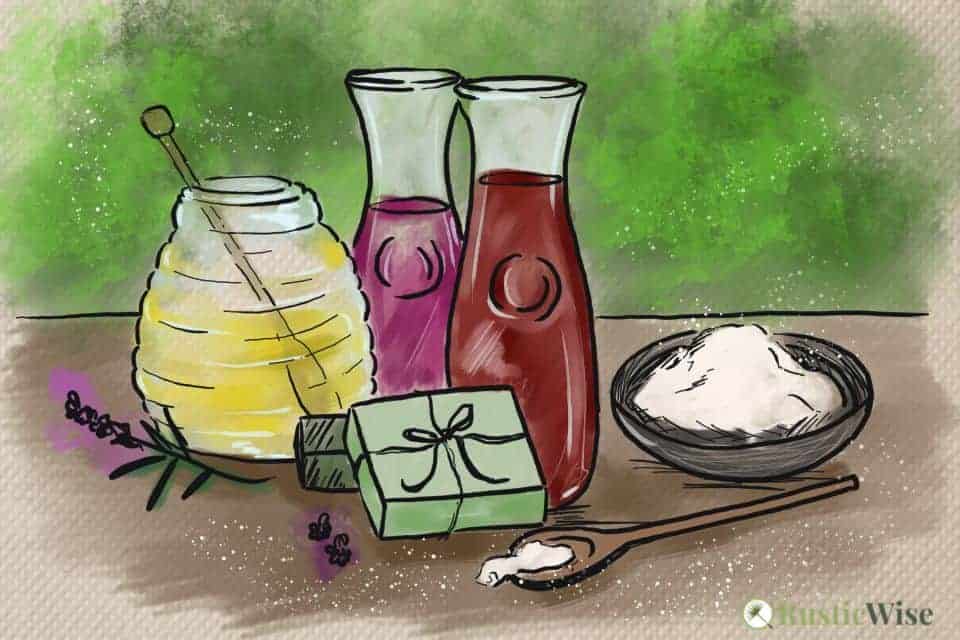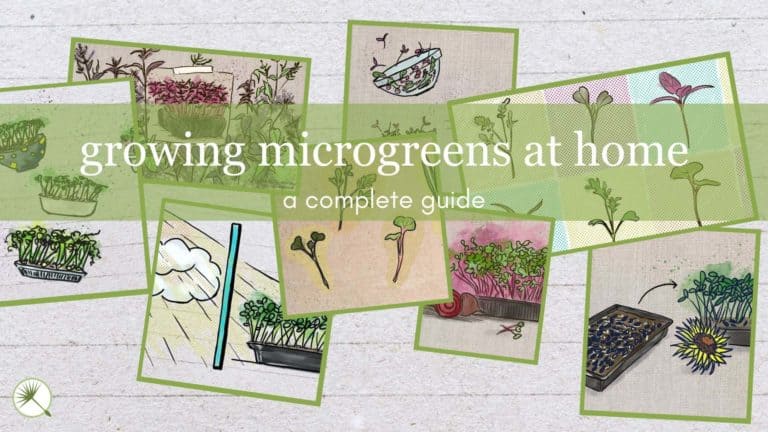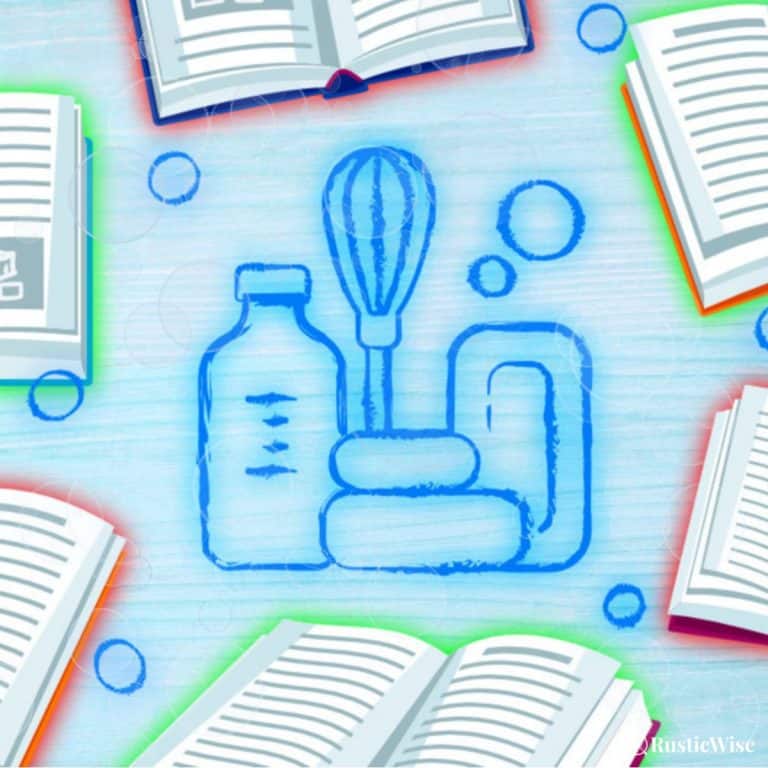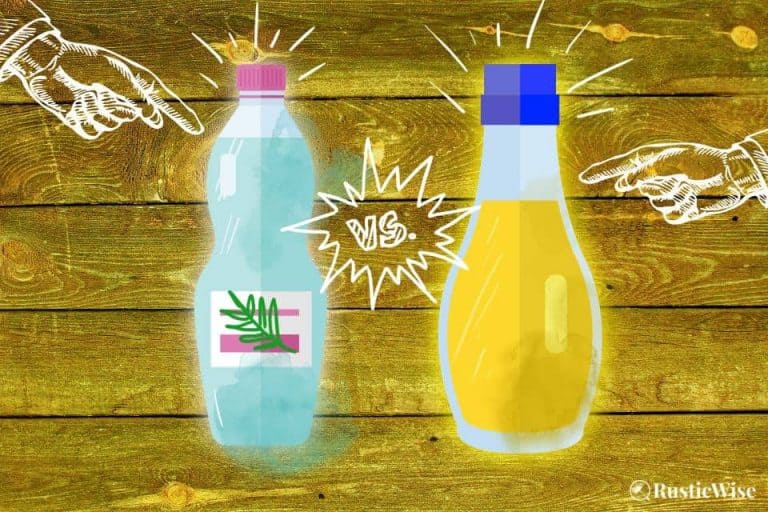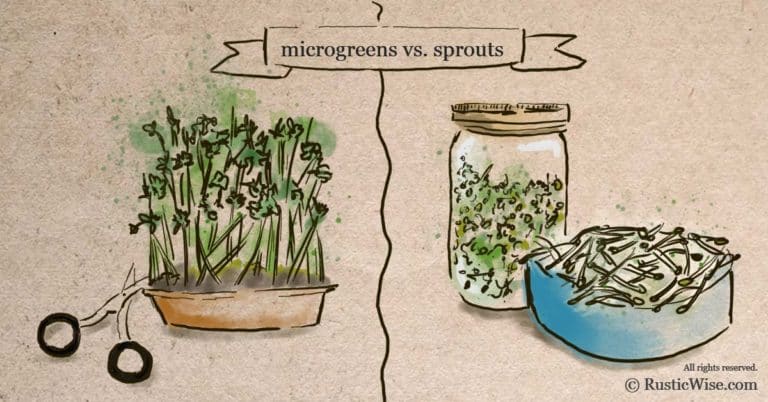Sugars and Sorbitol in Soap: How Sweet It Is
RusticWise is supported by its readers. When you purchase through links on our site, we may earn an affiliate commission. As an Amazon Associate, we earn from qualifying purchases. Thank You!
Using sugars or sorbitol in soap is a great way to enhance the texture of soap and boost lather. Sugars and sorbitol act as humectants, which draw moisture to the skin. Sorbitol is sugar alcohol with high water solubility.
In the world of handcrafted soap, there are many ways to do things. While you can use certain soaping oils to boost lather (such as castor oil, or coconut oil), or others like olive oil to add moisturizing properties, it’s also helpful to know how to achieve this through other additives like sugar or sorbitol.
Adding sugars or sorbitol to soap affects your soap batter in key ways. It can heat up quickly and hasten trace, to name a few. We’ll take a closer look at what sugars and sorbitol do in soap, plus tricks on how to add it to cold process or hot process soap.
Ready to sweeten up your batch of soap? (Sorry, I couldn’t resist at least one cheesy line…)
What is sorbitol?
Sorbitol is also known as D-glucitol or L-gulitol. It’s a natural organic compound belonging to a class of sugar alcohols. Sorbitol is found in many fruits and plants, including apples, berries, cherries, pears, and plums.¹
It’s synthetically produced from glucose. Sorbitol is highly water soluble and has about half the sweetness of sucrose.
There are many uses of sorbitol in everyday products:
- Food additive: Sweetens and enhances the texture of many foods such as chewing gum, ice cream, candy, confections, and food products for diabetics.
- Personal care products: Sorbitol is a common ingredient found in toothpastes, creams, and lotions. It’s also used in liquid and bar soaps as a humectant, an emulsifier, and a thickener.
- Pharmaceuticals: Sorbitol is used as a diuretic or laxative, or as a liquid suspension.
- Manufacturing: Used to produce other compounds, such as ascorbic acid, propylene glycol, and sorbose. Sorbitol also acts as a stabilizing agent for vinyl resins.
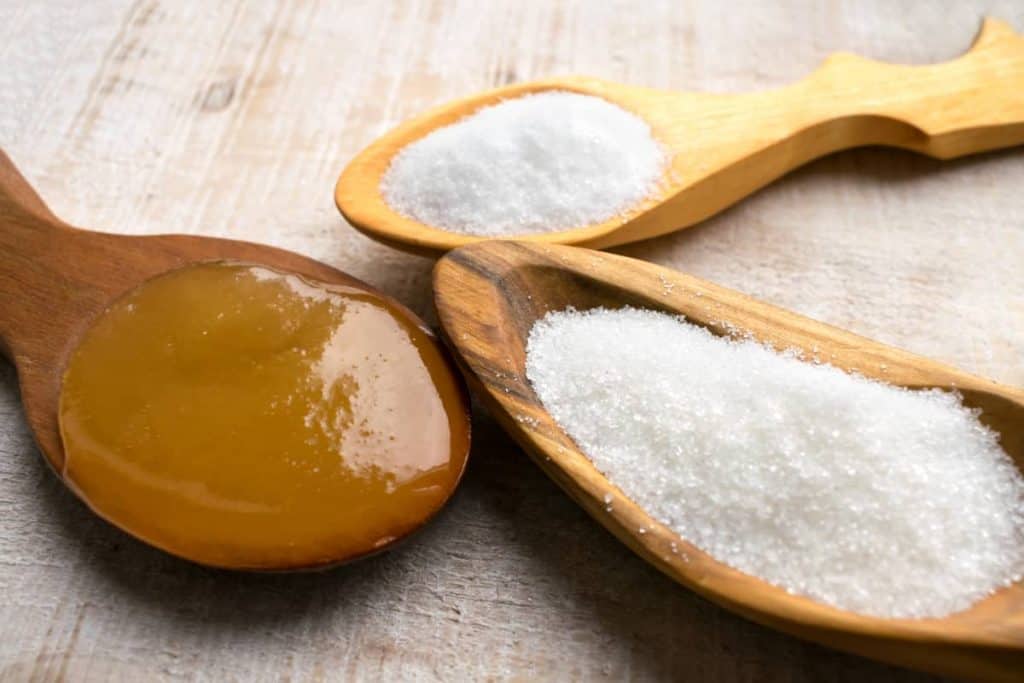
Credit: Vector State
Soap making additives with natural sugars
Besides using straight up table sugar (granulated sugar) or sorbitol in soap, you can also use other alternative liquids and additives to bring about desired properties in soap.
Add a dallop of honey for its skin nourishing qualities. Fruit juices may add a splash of color. Here are a few soap making additives which contain natural sugars.
- Honey: This is a natural humectant that softens the skin. Honey also has antibacterial properties.
- Fruit juices: Fruits belonging to the Rosacea family contain high levels of natural sorbitol. This includes apples, apricots, cherries, and pears.¹
- Beer or wine: Fermented beverages like beer and wine contain natural sugars. You may also get a lovely hued soap depending on the type of beer/wine you use.
- Milk: You can use different types of milk such as cow’s milk, or coconut milk. Goat’s milk is a popular choice for its skin nourishing qualities such as lactic acid.
Tip: When working with additives which contain naturally occurring sugars, remember that they can speed up trace and heat up quickly. For more tips on working with these additives, check out the section below.
What does sugar or sorbitol do in soap?
Here’s a quick high-level science lesson on the role sugars and sorbitol play in soap.
Soap molecules, as well as sugars and alcohols (like sorbitol), have both hydrophobic parts (repels water), and hydrophilic parts (mixes well with water).²
You’ll know something is hydrophobic when it doesn’t play well with water (think oils which don’t mix with water at all). You’ll know something has a water-loving hydrophilic element when water spreads evenly across it.
Soap molecules have MORE fatty properties than watery properties and are therefore low in water solubility. The soap molecules have long hydrophobic tails and lesser hydrophilic heads. (Notice whether soap dissolves quickly in water—it’s quite resilient and long lasting in water!)
On the contrary, sugars and alcohols are MORE water-loving than fatty. They have fewer hydrophobic parts and more hydrophilic parts. (Mix a spoonful of sugar in a glass of water and it dissolves quickly.)
Now, here’s what happens when you add sugar or sorbitol in soap batter.
When you mix sugars or alcohols with soap molecules, the sugars and alcohols get cozy with the hydrophilic part of soap. In this way, the alcohols and sugars make the soap more compatible with water molecules than it would normally be.
This leads to all sorts of interesting things in your soap batter, such as:
- A rise in temperature.
- Quicker emulsification of oils which leads to quicker trace.
- Soaps enters gel phase more quickly.
And since the sugars and alcohols make soap molecules more compatible with water molecules, you’ll notice your finished soap is more water soluble and produces bigger, bubblier lather!
Note: Alcohols also contribute to more transparency in soap if that’s something you’re hoping to achieve. Using alcohols in soaps made using lye produce translucent soaps, rather than the truly transparent soap bases you can buy for melt and pour soap making.
To summarize, sugars or sorbitol do the following in DIY soaps and lotions:
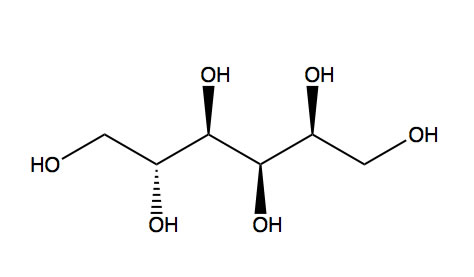
Credit: Wikimedia Commons
Is sorbitol safe on skin?
Yes, sorbitol is safe to use on skin. You’ll find sorbitol listed as an ingredient on hundreds of common personal care products.
The U.S. Environmental Working Group (EWG) gives it a rating of 1 (Fair) as it’s not deemed as potentially toxic.³
The U.S. FDA also classifies sorbitol as generally recognized as safe (GRAS).⁴
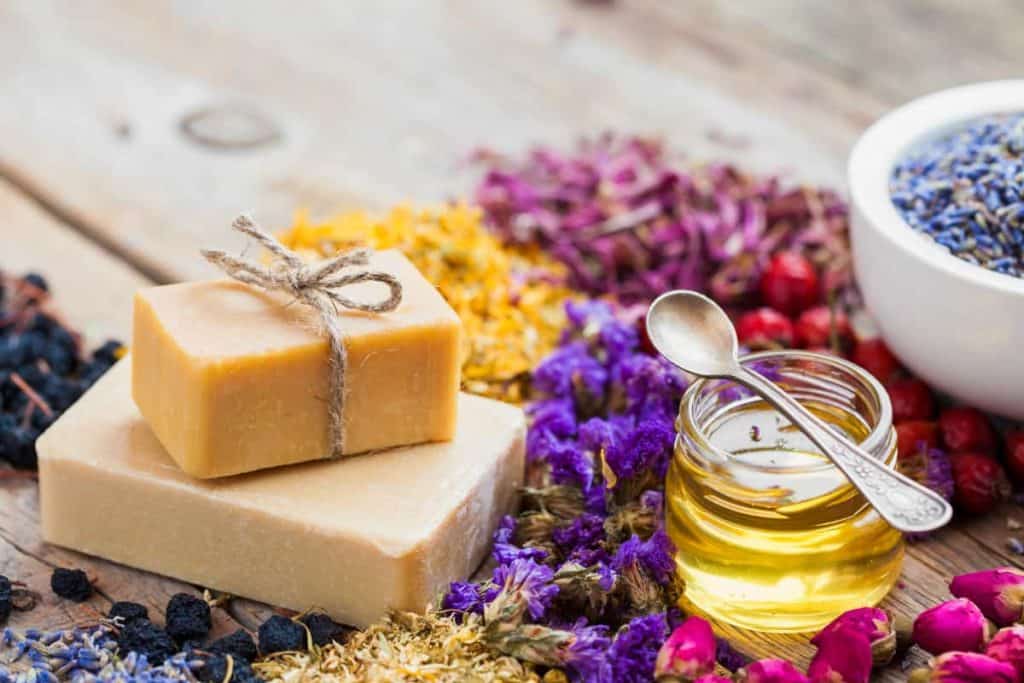
Credit: 123RF.com
How to add sugar or sorbitol to soap
Sorbitol comes in either a powder or a solution (a common ratio is 70 percent sorbitol mixed with 30 percent distilled water).
There’s no hard rule about the amount of sugar, honey or sorbitol to add to soap. Use between 1 and 4 percent sugar/sorbitol per weight of oils. A good place to start is to use 1 teaspoon of sugar, honey or sorbitol per pound of oil. You can adjust and experiment by increasing up to 4 percent of the total oils in your recipe.
You can also add sugars to various stages of the soap making process.
In lye water
You can dissolve sugar or sorbitol (if using a powder form) in your distilled water before or after you add your sodium hydroxide.
Keep in mind that if adding honey or sugar, it may carmelize or scorch if added when the lye mixture is very hot. It’s a good idea to allow the lye solution to cool to room temperature before adding your sugars.
Mixed into oils
Alternately, you might prefer to add sugar/sorbitol directly into your soaping oils. Make a sugar solution (by displacing some of the distilled water used for the lye solution) to dissolve sugar before adding to oils. Add the lye water to oils afterwards.
At trace
When your soap batter has reached trace, you can add a solution of sugar water, or sorbitol solution. Use your stick blender to mix well.
In between layers as a spray
If you’re making a layered soap, try making a sugar water solution (or sorbitol solution) of 70/30. Fill a spray bottle with the solution and spray in between layers for a blast of sugar!
What’s the difference between using table sugar or sorbitol in soap?
The major difference between using granulated sugar or sorbitol is the former may scorch, while the latter is less prone to scorching.
When table sugar (sucrose) scorches, it may turn your soap slightly yellowish.
Sorbitol does not turn color and stays clear/white which might matter to you if you’re striving for a whiter or clearer bar.
Where can you buy sorbitol?
You can find sorbitol at some specialty food stores, baking suppliers, and other soap or bath suppliers. And of course, you can also find it on Amazon.
You might like
Pure Sorbitol Powder, Vegan, Gluten-Free, OU Kosher Certified – 1 kg/2.2 lbs/36 oz
- Sorbitol is a corn derived sugar alcohol.
- Sorbitol will not brown or caramelize like sucrose (table sugar).
- Used in many sugar free, low calorie and diabetic products
Found on Amazon
Check Current Price
Those in Canada and the UK should be taken to the product listing in your region.
Tips on working with sugars and sorbitol in soap
A common problem when working with sugary additives is overheating.
Related questions
Can you add sorbitol to melt and pour soap?
Yes, you can add a small amount of sorbitol to melt and pour soap bases, but, you might not need to! Many glycerin soap bases already contain sorbitol. Check the ingredients label first! Adding too much sorbitol may make your melt and pour soap too soft.
New to making soap? 🧼❓
👉We have a fantastic overview on the whole soapmaking process here: read our Timeless Guide To Soapmaking.
If you would like to see our soapmaking posts organized by topic type, see our Soapmaking Collection.

References
- FooDB, Compound D-Glucitol, https://foodb.ca/compounds/FDB011676. Accessed January 2022.
- Dunn, Kevin (11 January 2018). “Alcohols, Sugars and Cold Process Soap,” Wholesale Supplies Plus. Accessed January 2022.
- U.S. Environmental Working Group (EWG), Sorbitol, https://www.ewg.org/skindeep/ingredients/706239-sorbitol/. Accessed January 2022.
- U.S. Food & Drug Administration, CFR – Code of Federal Regulations Title 21, https://www.accessdata.fda.gov/scripts/cdrh/cfdocs/cfcfr/CFRSearch.cfm?fr=184.1835. Accessed January 2022.

Author: Josh Tesolin
Josh is co-founder of RusticWise. When he’s not tinkering in the garden, or fixing something around the house, you can find him working on a vast array of random side projects.

